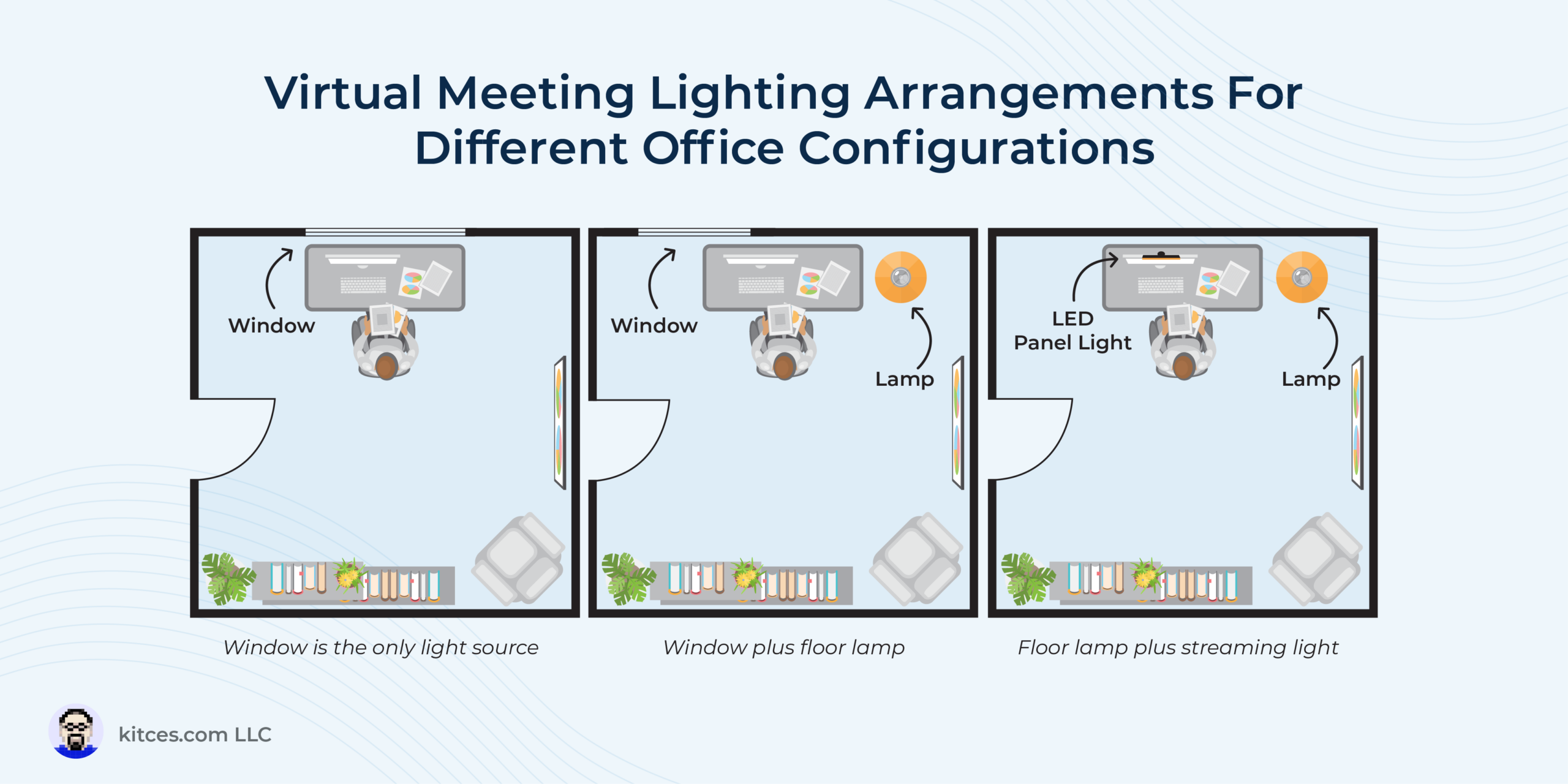Traditionally, financial planning meetings have been held face-to-face in an advisor’s office, and over the years, a body of research has emerged showing that how the advisor’s office is laid out can have a significant impact on how clients perceive the advisor, their mood during the meeting, and even their resulting financial planning decisions. However, over the last decade (and particularly since the beginning of the COVID-19 pandemic), many advisors have increasingly been holding virtual client meetings over Zoom or other videoconferencing software – and more recent evidence is showing that, just as the physical office environment matters for advisors who meet in person, the ‘virtual’ office environment also matters for those who meet virtually.
In this post, Kitces Senior Financial Planning Nerd Ben Henry-Moreland writes about the unique challenges created by virtual meetings and how advisors can optimize their meeting space (as well as the structure of the meetings themselves) as a virtual environment.
For many advisors, the transition to meeting virtually was a struggle on account of two major challenges. First, communicating effectively and creating the same level of personal connection over a video call is more difficult than when meeting in person; in other words, there is a decline in what researchers call ‘social presence’ or the feeling of being present with a real person. Second, many people (not just advisors) who have greatly increased their use of virtual meetings in the last few years have experienced the phenomenon of ‘Zoom fatigue’, in which a combination of factors (including excessive eye contact, the distraction of viewing one’s self onscreen, limited mobility, and louder speaking) make virtual meetings far more tiring than those held in person.
However, advisors can significantly reduce these negative effects of meeting virtually by optimizing the setup of their office environment and meeting structure. For example, the way that an advisor sets up their lighting, sound, and office furniture for their virtual meeting can affect how ‘immersive’ and realistic it feels for the client on the other end of the call. Furthermore, setting up a meeting background (either in the form of a physical office space or a computer-generated backdrop) that’s more inviting than imposing can help the client feel more relaxed and open in conversation, while introducing opportunities to go ‘off-screen’ during the meeting (such as using screen sharing options at various points or even just building occasional breaks into the agenda) can help both the client and advisor fight Zoom fatigue and stay focused.
The key point is that with just a small investment – both in monetary terms for lighting, sound, and camera equipment, and in time spent planning how to set up the office space and structure the meeting – advisors can meaningfully improve the virtual meeting experience for both their clients and themselves, and create an environment more conducive to talking about the client’s issues and feelings around money. Ultimately, that investment can make the transition to meetings well worth it, since the ability to meet with clients virtually means that advisors can work with more types of clients, specialize in new niches, and thrive in new ways without the geographic constraints of meeting in person.


